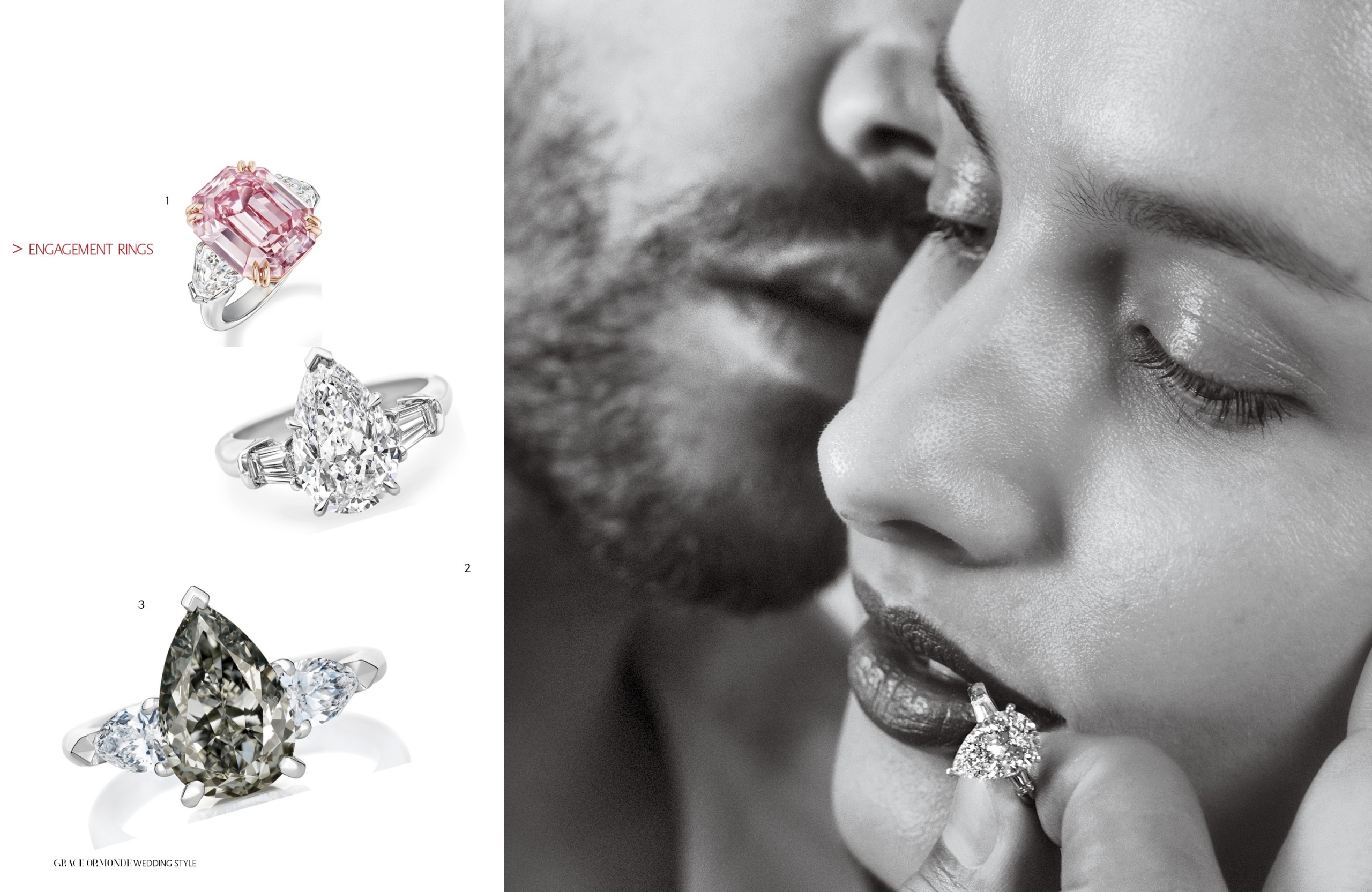
As Seen in Grace Ormonde Wedding Style Photography by: Kellie Walsh, 4 Eyes Photography
Cartier Pear-Shaped Diamond Engagement Ring.
1. Harry Winston Pink Emerald-Cut Engagement Ring. 2. Harry Winston Pear-Shaped Ring with Tapered Baguette Side Stones. 3. De Beers
COMPLETE GUIDE FOR CHOOSING THE PERFECT ENGAGEMENT RING IN 2023
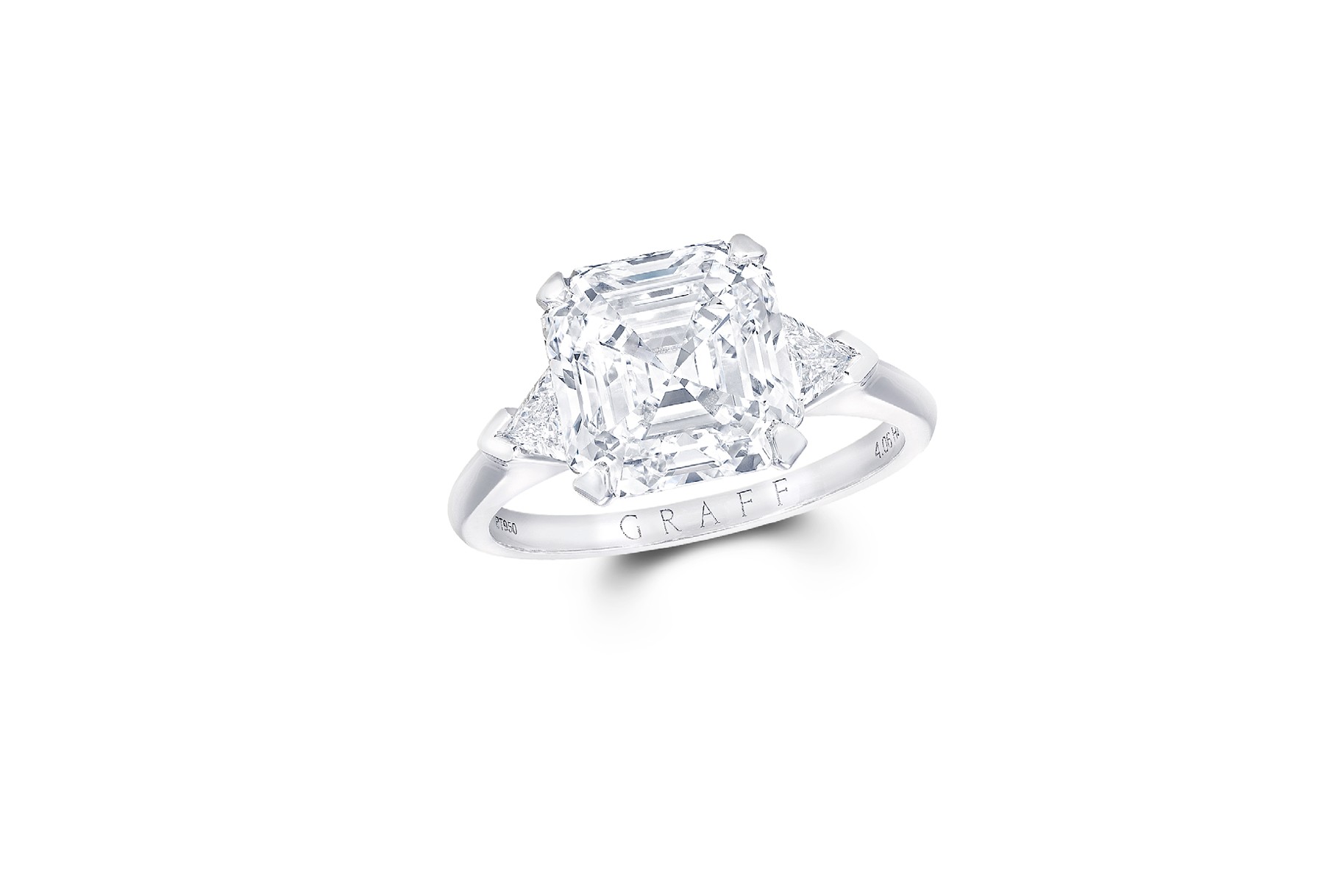
There are more engagement ring options now than ever. While shopping, whether online or in a store, you’re forced to make enough decisions that would even make Goldilocks feel overwhelmed. How will you know it’s the perfect engagement ring when you see it?
You can breathe a sigh of relief - we have you covered with this guide!
Whether you’re shopping together or solo, keep reading to learn how to pick an engagement ring that your bride will love forever.
Brief History on Engagement Rings
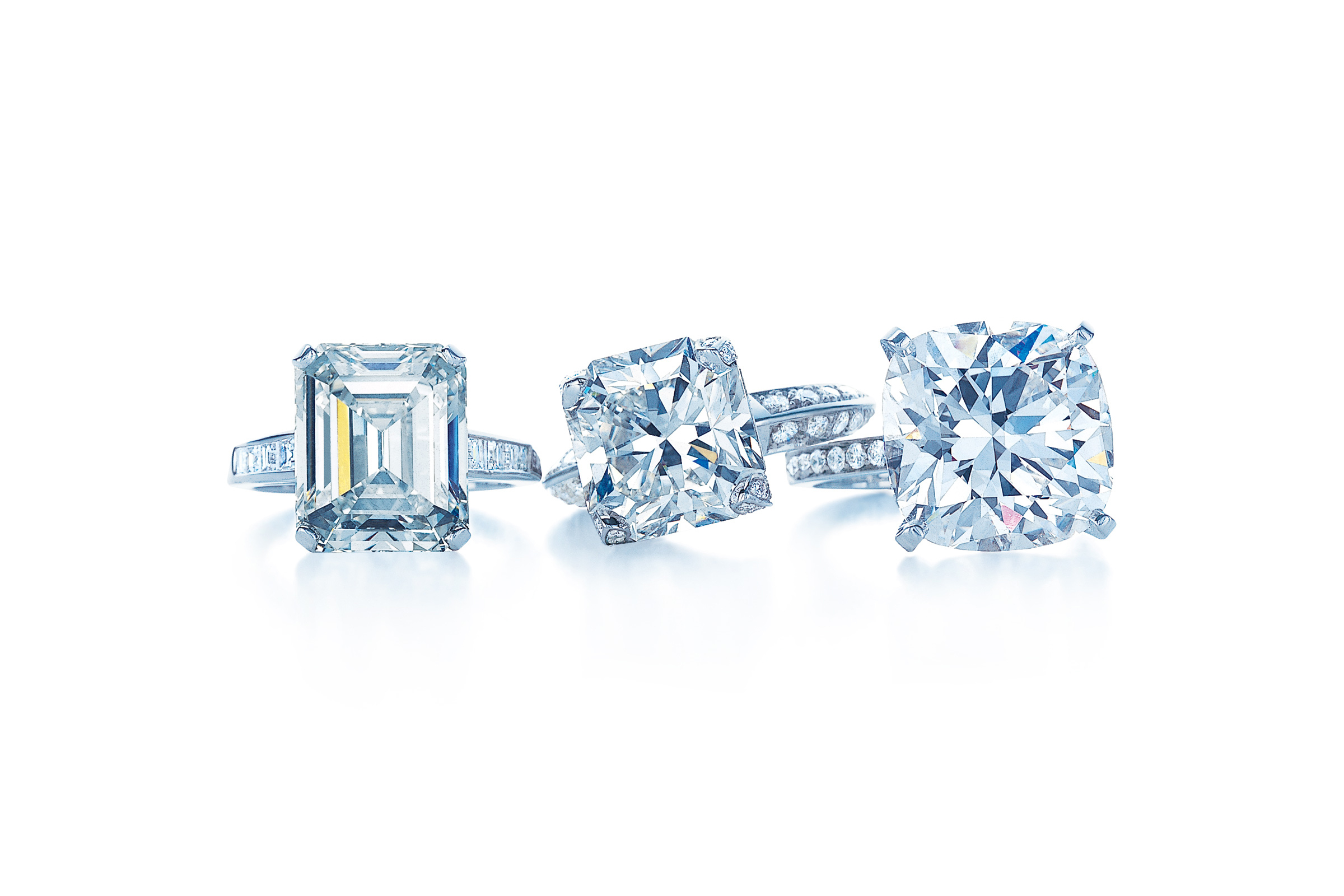
Ironically, the history of engagement rings doesn’t have the most romantic tale. Engagement rings began as a symbol of ownership and obedience in Ancient Rome. It wasn’t until the 1940s that diamond engagement rings even became a popular trend. As time marches on, engagement ring gemstones can be seen in more shapes and colors, and the settings continue to be impressively creative and unique, as well.
Seeking Perfection: How to Pick an Engagement Ring
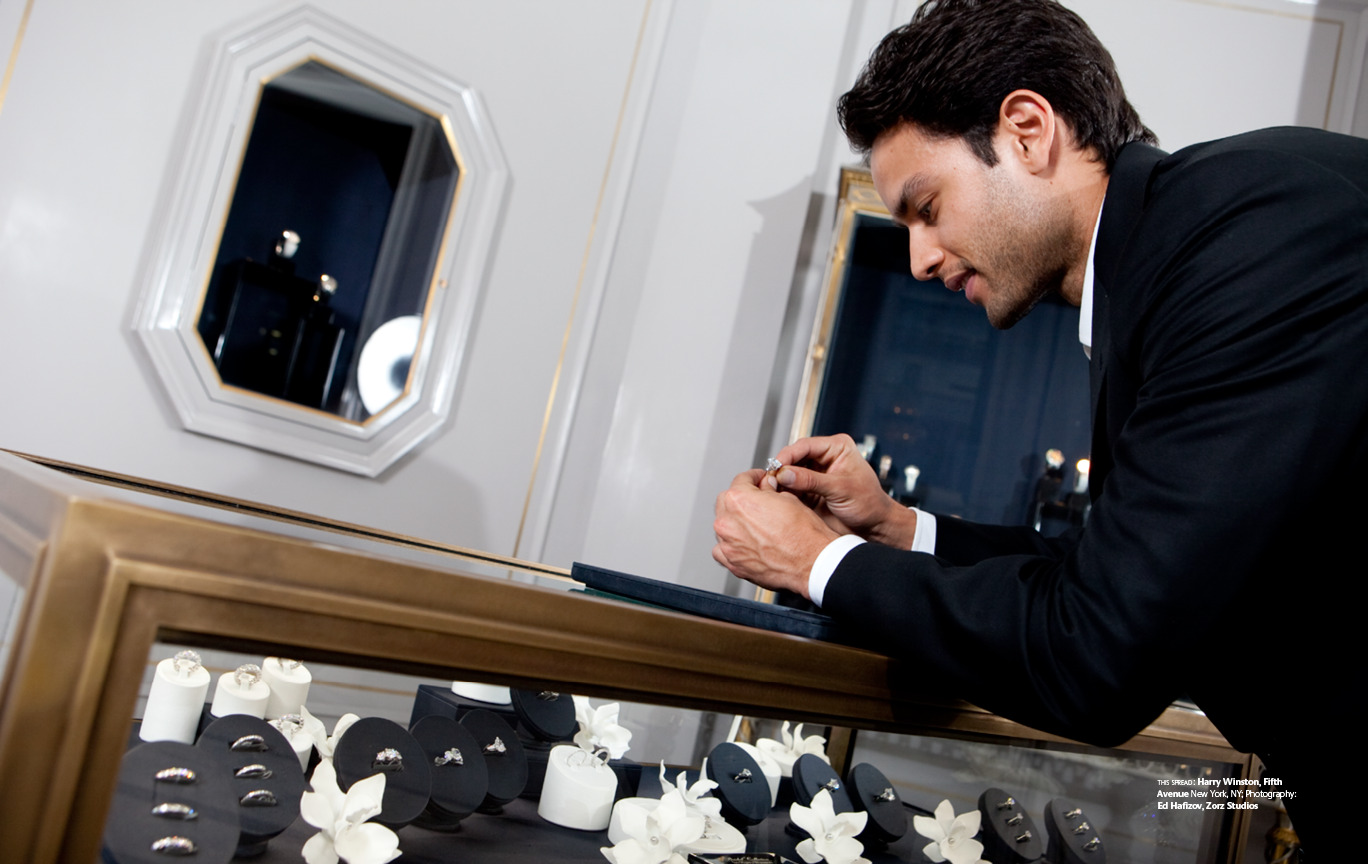
As Seen in Grace Ormonde Wedding Style Photography by: Ed Hafizov, Zorz Studios Engagement Ring Harry Winston
An engagement ring is an investment. It’s an investment in your relationship, your shared future and, clearly, your finances. It’s a token that will be worn nearly every day. It’s an asset that can even increase in value. So, you have to choose wisely.
While you scan websites or peruse jewelry shops, you realize the possibilities are literally endless. You need to pick an engagement ring that showcases your commitment to your partner, one that exemplifies their taste and one that they will be happy to put on their finger to be reminded of you.
But with so many options and a budget, how do you pick the perfect engagement ring? Here are some crucial tips:
- Don’t purchase the first ring you look at
- Only buy certified stones from accredited organizations
- Request a diamond grading report
- Learn the bride’s metal, carat, shape and cut preferences
- Explore diamond alternatives
- Determine where the stone came from and how it was sourced
- Don’t opt for trends
- Think about how the engagement ring will look with the wedding band
- Consider working with a jeweler to create a one-to-a-kind ring
What to Know When Choosing a Diamond Ring
Let’s face it: Picking out a diamond ring can be as big of a decision as buying a car or house. If you know your loved one expects a diamond on their ring finger, then here’s everything you need to know while shopping around.
What to Look for in a Diamond
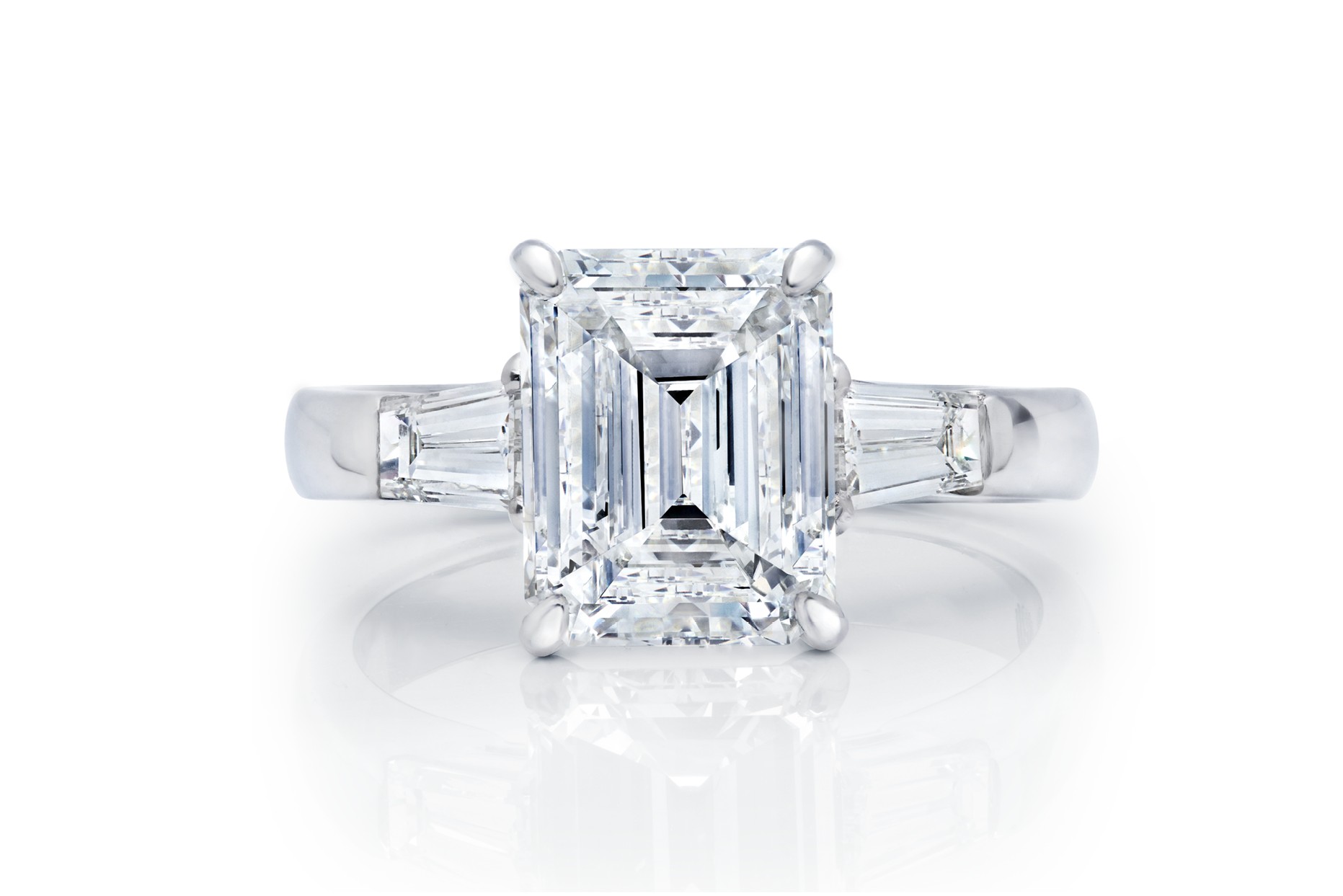
You may be familiar with the four Cs, which are cut, clarity, color and carat. Evaluating the four Cs is one of the primary rules for how to pick out an engagement ring, because they will help you determine the quality of a diamond and will aid in your decision making. We’ll dig deeper into the four Cs later in this article, but aside from them, you want to make sure the diamond is beautiful in both your and your bride’s standards. If you already have prominent ideas for a setting and wedding band, then you’ll want to make sure that the diamond matches well with them. It also would be smart to begin your search by looking at diamonds in your price range or a little above it, assuming that you can negotiate for a lower cost.
Diamond Types
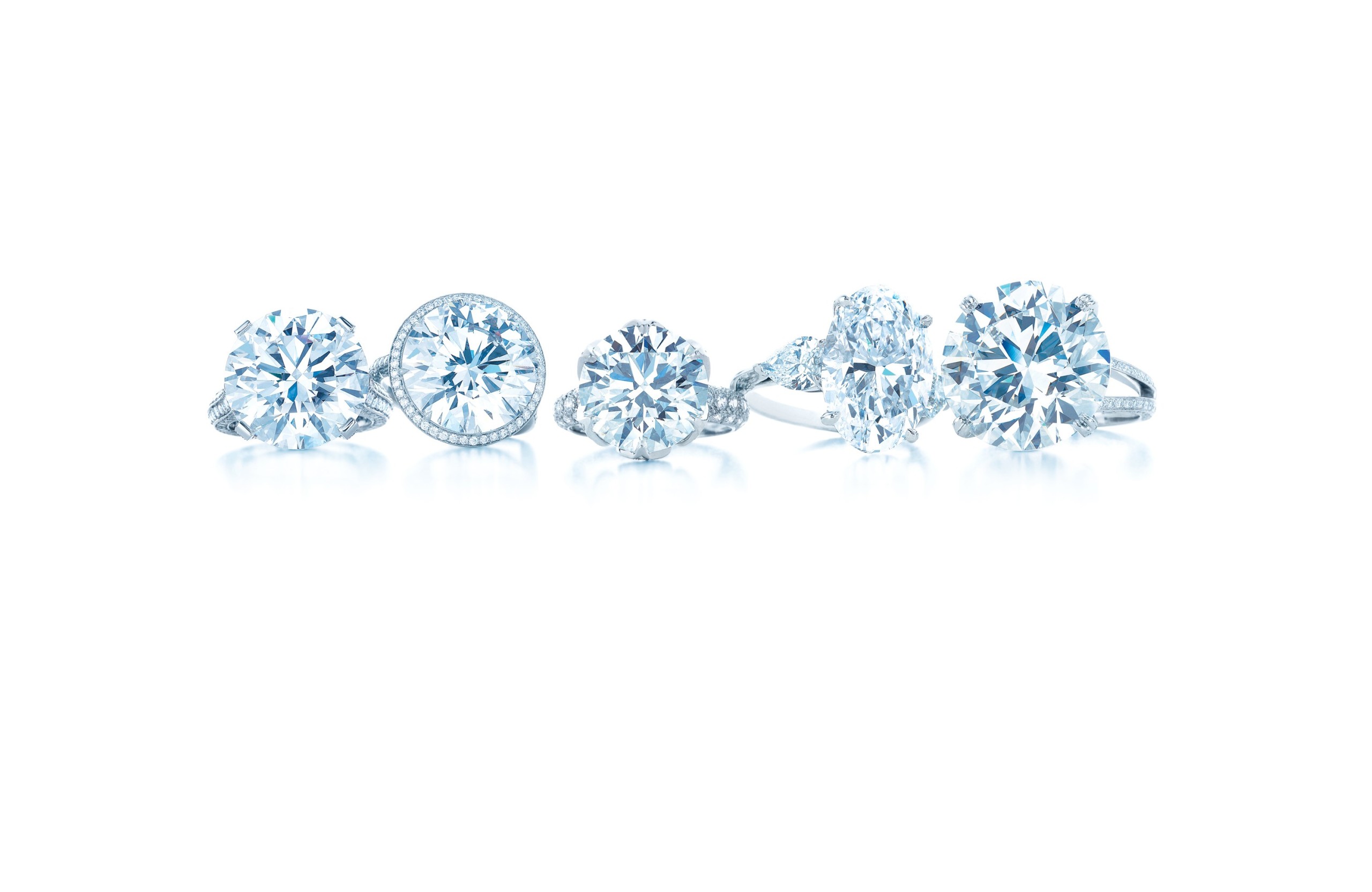
Understanding the different diamond types is another method to help you figure out how to pick an engagement ring for your partner.
Knowing the diamond type determines if the diamond is natural, synthetic, rare and other qualities that influence its appearance and value. Diamond is made of approximately 99.95% carbon, but the remaining 0.05% may contain trace elements, either as a result of natural formation or from a laboratory. These trace elements help dictate the diamond type.
Originally, scientists in the 1930s created two diamond types to catalog a diamond’s chemical composition, but today, those types have been split into subgroups, for a total of four diamond types that are currently used:
- Type Ia - This is the diamond type for most natural diamonds, where the gemstone ranges from colorless to a light yellow. Diamonds of this type have clusters of nitrogen atoms.
- Type Ib - These diamonds are often bright yellow and exceptionally rare to find. Diamonds of this type have isolated nitrogen atoms.
- Type IIa - This is the diamond type for those that are the most chemically pure, as they have no measurable impurities. These diamonds are often colorless, light yellow, gray, light pink or light brown.
- Type IIb - These diamonds are usually a blue or gray color. They contain boron and also may conduct electricity.
Diamond Cuts
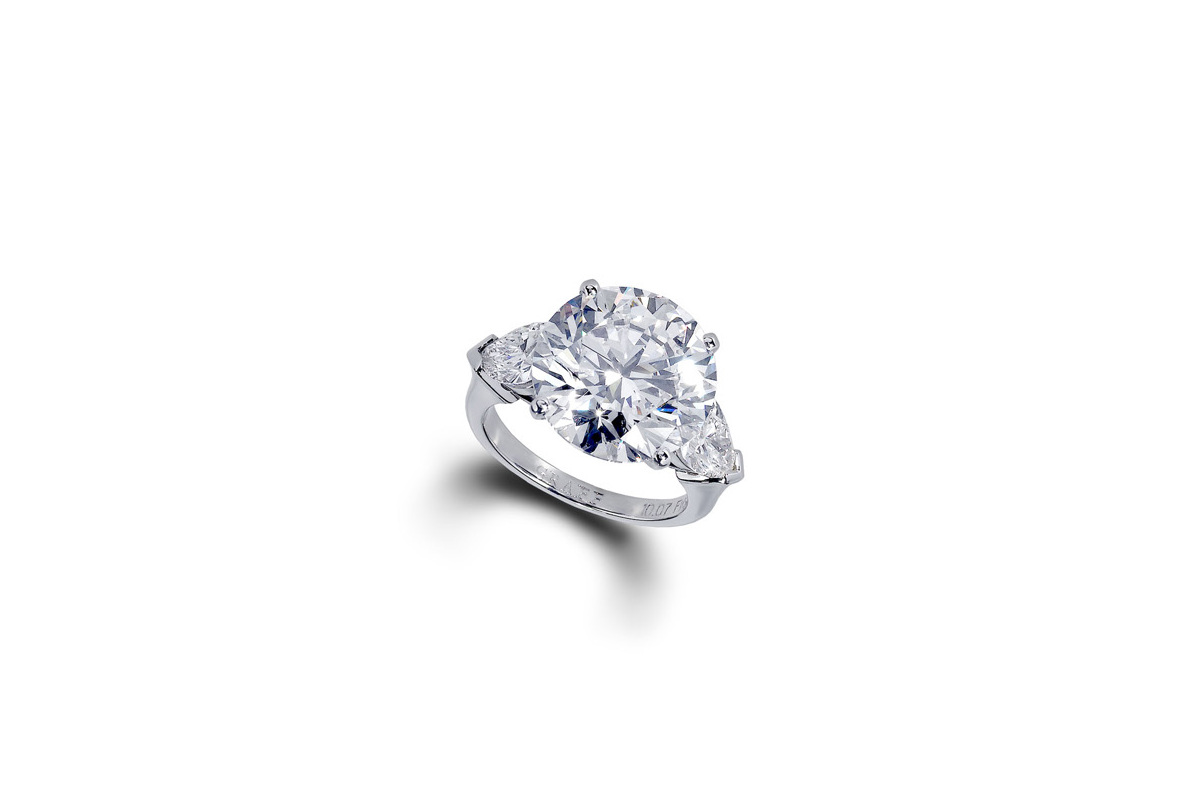
A diamond cut, which is essentially how it’s cut and polished, can dictate its aesthetic appeal, brightness, sparkle, pattern and value. The better the cut quality, the higher quality and value of the diamond. A diamond that is well cut (either called “excellent” or “ideal” cuts) will reflect light through the crown and table (aka: top) of the diamond, so that the diamond sparkles and showcases beautiful reflections of color.
Who wants a dull diamond? We highly recommend you request a diamond cut grade report on diamonds you are considering helping you with the decision process.
Caring For Diamonds
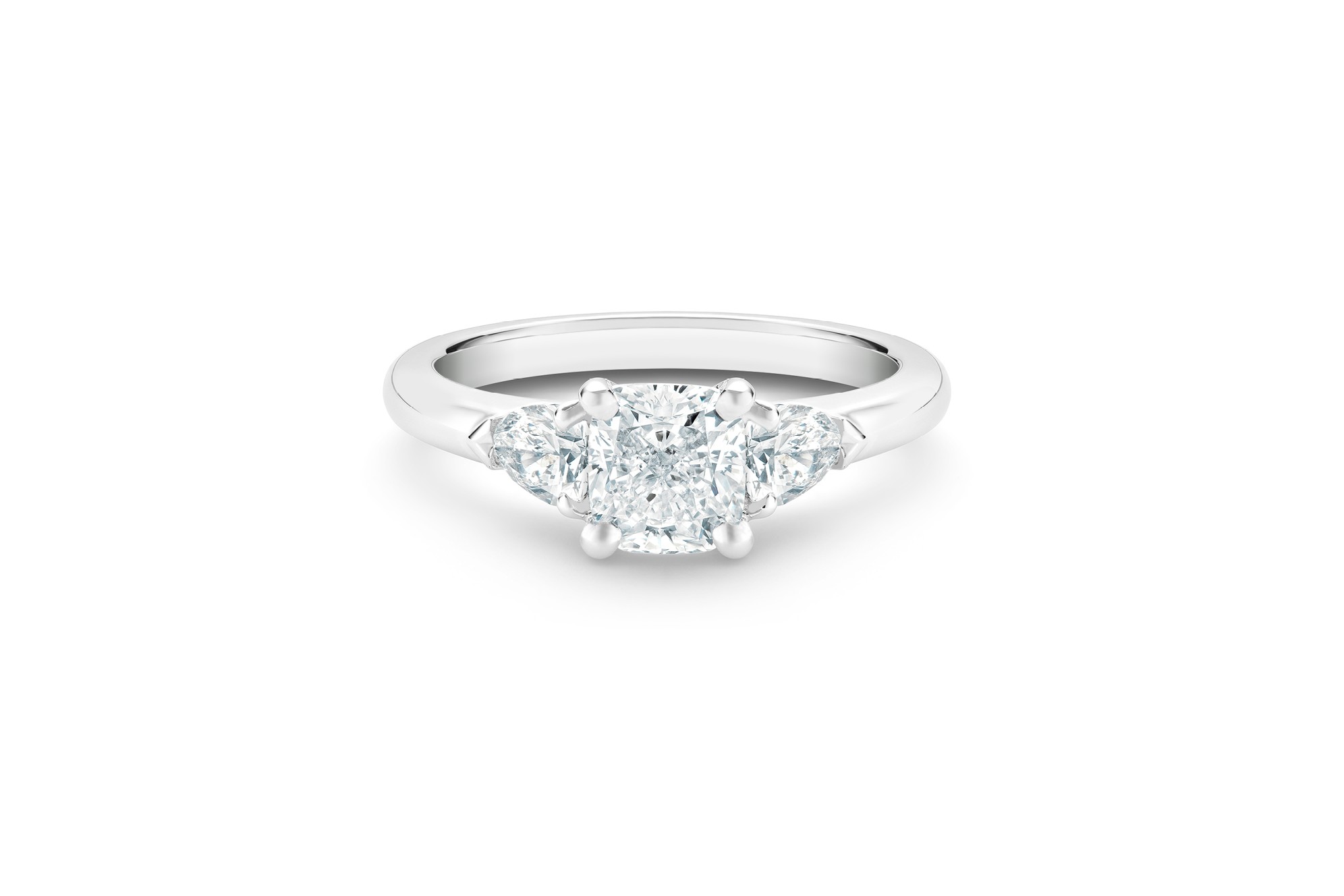
Although diamonds are considered the hardest substance on our planet, due to its extremely strong chemical bonds at an atomic level, they still need regular care. Even the oils from you or friends’ fingers can quickly take a diamond from glitz to gloom.
Once or twice a week, gently clean diamonds with a lint-free cloth or soak them in water with a few drops of mild dish soap. If a diamond is noticeably dirty, you can use mild soap and a soft toothbrush to scrub it clean. It’s recommended that you routinely bring your diamond jewelry into a professional jeweler to have it cleaned, as well as tightened, if necessary. Consult a professional jeweler before using an ultrasonic cleaner.
Store diamond jewelry in soft or padded bags or boxes, isolated from other jewelry and diamonds. Be wary that a diamond can chip when hit hard or can loosen from its setting, so always handle a diamond ring with the utmost respect.
The Four Cs in Choosing a Precious Gemstone
When you’re wondering how to pick an engagement ring, remember the four Cs. The Gemological Institute of America, also known as GIA, established the four Cs as the first standard for assessing diamonds. It is the universal, international standard for judging diamond quality. The four Cs are:
- Cut - The most complex of the four Cs, cut is determined by the diamond’s proportions and how it interacts with light for its brightness, rainbow reflections and sparkle.
- Clarity - Diamond clarity is regarding the inclusions (internal characteristics) and blemishes (external characteristics) that positively or negatively affect the aesthetics of the gemstone.
- Color - When we evaluate diamond color, it’s about the lack of color. The color differences are often very subtle and need to be assessed by an expert.
- Carat Weight - The carat of a gemstone is really its weight, although we often believe it to be based on the size. The larger the carat weight, the rarer and more desirable the diamond.
Take all these variables into close consideration when picking an engagement ring, whether the stone is a diamond or another gem.
Choosing The Perfect Ring for Your Budget
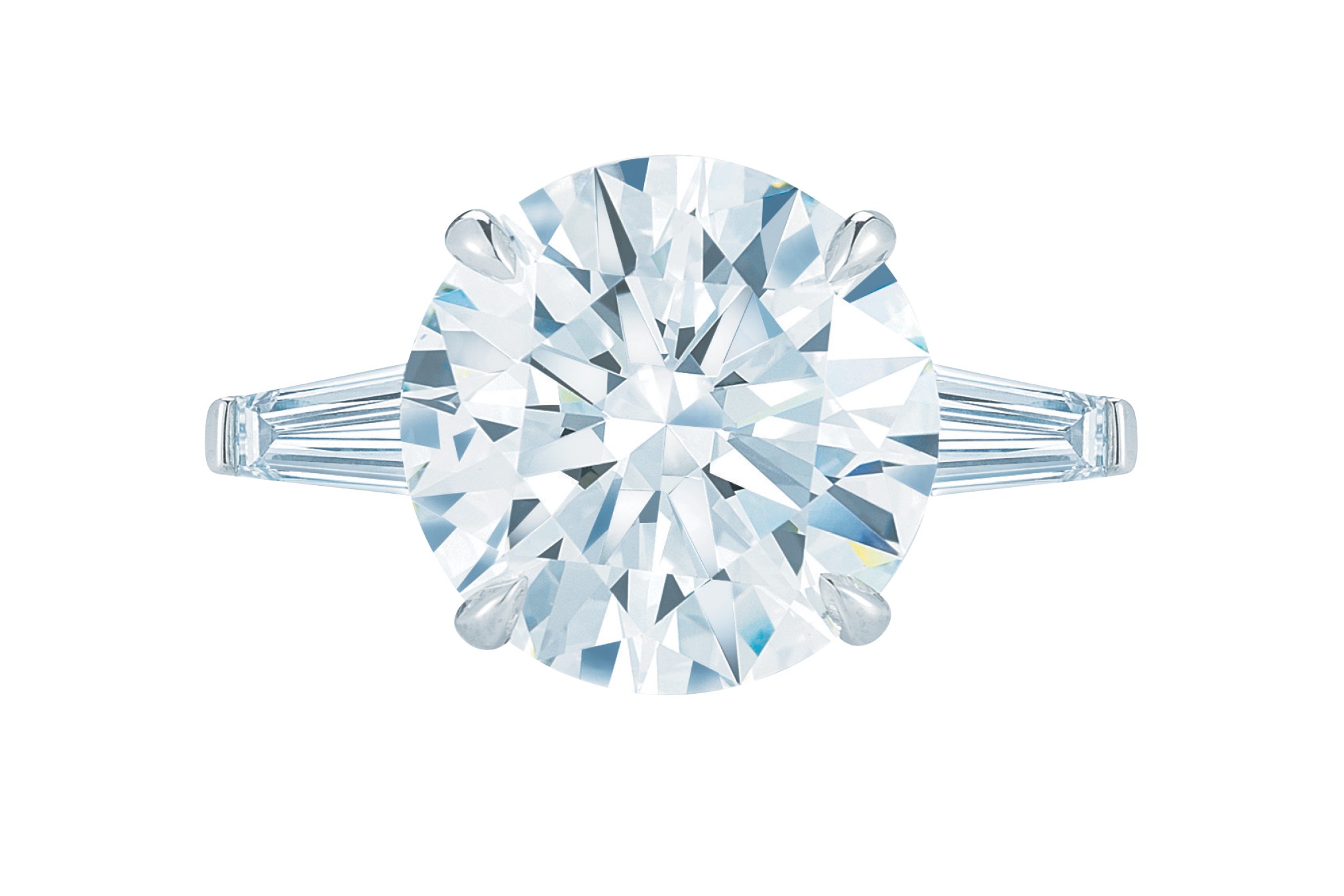
Forget about the old two months’ salary phrase. Buying an engagement ring should be a delicate balance of affordability and preference. If price isn’t an issue, then purchase a ring that you know your partner will adore forever. If price is important to you, like it is for most people, then determining a budget is a crucial step before you pick an engagement ring.
First, take a deep look at your income, expenses, savings and credit. Figure out what you can do to be able to afford an engagement ring or how long it will take. Keep in mind that a lot of jewelers have zero-interest credit programs that could be better than what credit card companies offer.
Your partner doesn’t want you to experience financial distress over the engagement ring. But keep in mind that for some people, the quality, uniqueness or price displays the value you place on the relationship and your bride-to-be. However, overall, you must be OK with the amount that you spend on the ring.
How to Choose the Right Setting
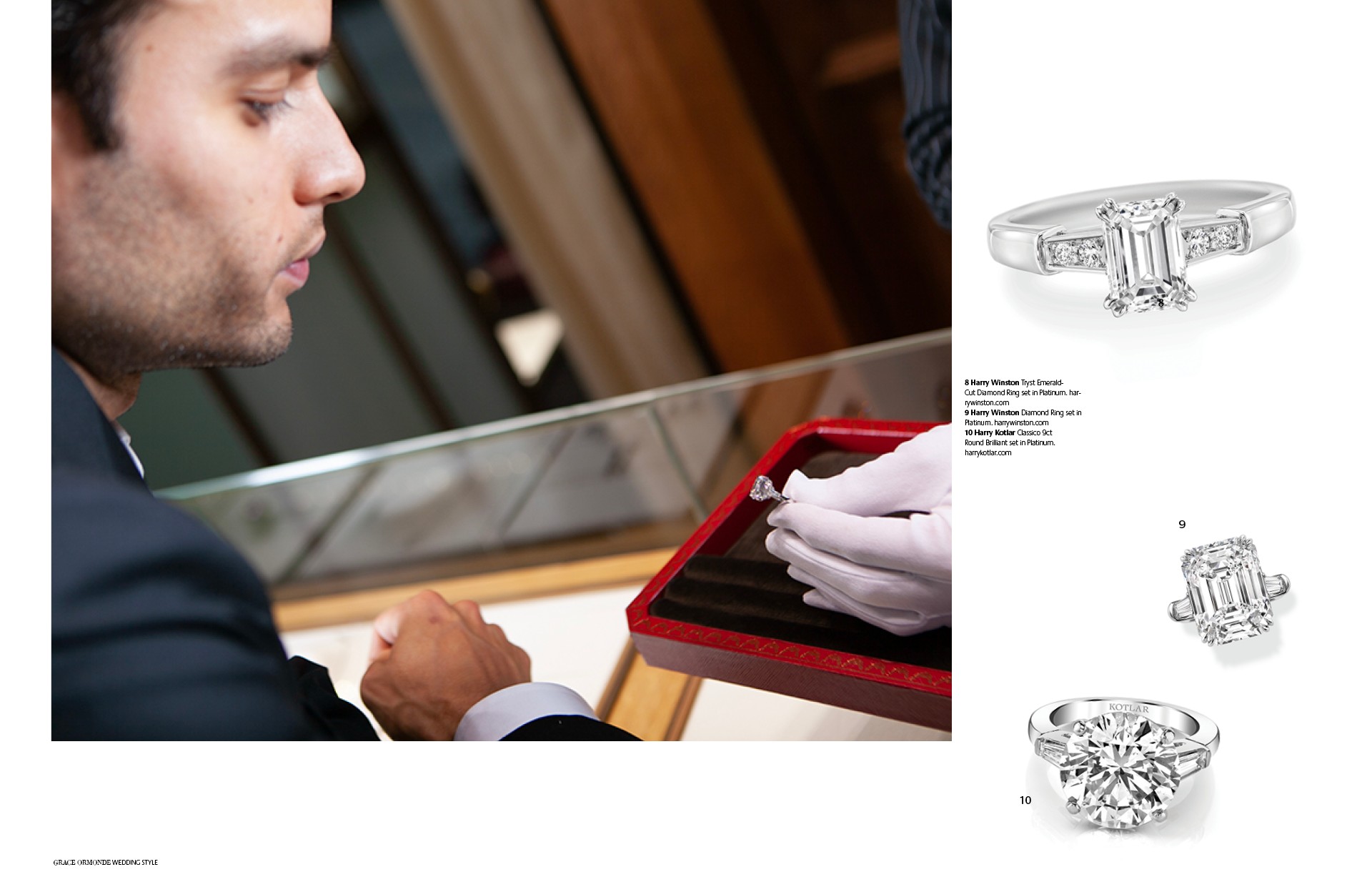
As Seen in Grace Ormonde Wedding Style Photography by: Ed Hafizov, Zorz Studios Engagement Ring Catier
1. Harry Winston Tryst Emerald-Cut Diamond Ring set in Platinum. 2. Harry Winston Diamond Ring set in Platinum. 3. Harry Kotlar Classic 9ct Round Brilliant set in Platinum.
While considering how to pick an engagement ring and what the perfect ring looks like, don’t forget about the setting. For some, the setting is just as important as the gemstone.
The best setting for your loved one will depend on the gemstone(s), personal style, metal preferences, the wedding band, and your budget. Another important thing to keep in mind is making sure that you pick a ring that matches her lifestyle and doesn’t compromise the security of the stone.
- Features to consider when shopping for engagement ring settings:
- The arrangement of the stone on the setting
- How the gemstone will be held in place
- Use of embellishments and stones on the setting
- The ring structures
